The 25 Best Online Learning Collaboration Tools

Collaboration is one of the most important assets in effective eLearning for both students and teachers. Educators working together can create materials that are better than the sum of their parts, and students who take an active part in this learning will achieve better outcomes.
The modern learning industry has been inundated with technology that makes working together to maximize learning outcomes and learning experiences easier than ever. However, as there are so many tools to choose from, we compiled and organized a list of the 25 best online collaboration tools for online learning.
Tools for Collaborative Authoring
We’ll start with one of the most important tools for any educator: an authoring app. An authoring tool is software used to create any digital educational content. An authoring tool should come with a range of features for creating stunning and engaging content, but also allow users to cooperate with other educators or designers. Being especially useful for those educators working in large departments, as well as teachers sharing the same class, these collaborative authoring tools are our top picks.
1. iSpring Suite Max – Create feature-rich courses quickly and easily

iSpring Suite Max is a PowerPoint add-in that boasts a huge range of design features for creating engaging eLearning content. The platform includes iSpring Cloud, a collaborative eLearning tool that allows authors to share projects and receive feedback seamlessly, without sending emails back and forth. Moreover, authors and reviewers can co-edit content in real time, including online quizzes, and generate quiz questions based on suggestions made by AI.
Cost: starting at $970 per author/year; free 14-day trial.
2. Articulate 360 – Design interactive learning material with colleagues

Articulate 360 is a suite of products, the foremost of which is the Storyline 360 authoring tool. Much like iSpring Suite, Storyline is one of the best authoring platforms available, and is, therefore, a great collaborative eLearning tool. Articulate 360 allows for teams to contribute to digital educational content and receive feedback on its implementation.
Cost: from $1,099 USD/year; free 30-day trial.
3. H5P – Collaborative learning design that embeds on your website
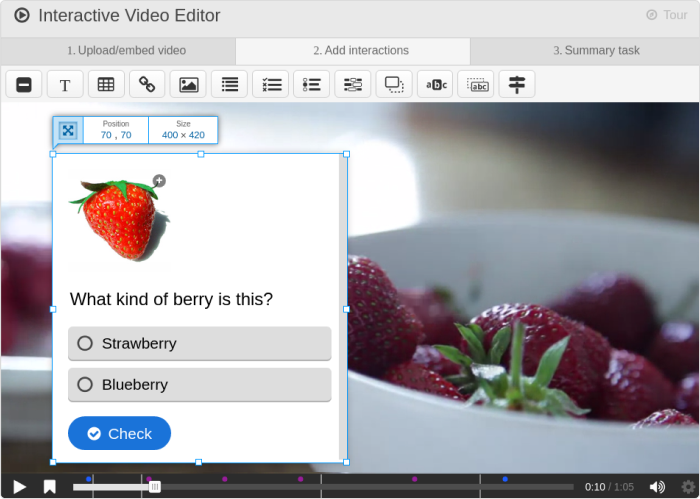
H5P is slightly different as a tool for collaborative eLearning authoring. H5P is open-source and works in a web browser or can be integrated with an LMS through LTI. The tool is designed to enable the creation of educational content accessed directly through a website, and people with access to the site can collaborate seamlessly. The tool supports a range of engaging features, like quizzes and games, but can be a little tricky to master.
Cost: free
4. Udutu – Web-based authoring for unlimited users
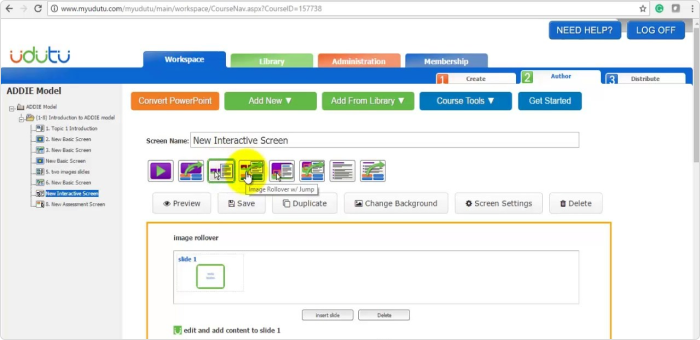
Udutu is a web-based authoring tool for designing interactive lessons and courses. It’s free to use and allows for an unlimited number of users to collaborate on a project in real time. For a large team of designers and SMEs, using different hardware to create content, this browser-based collaborative eLearning tool may be perfect.
Cost: free
5. Easygenerator – Simple drag-and-drop authoring
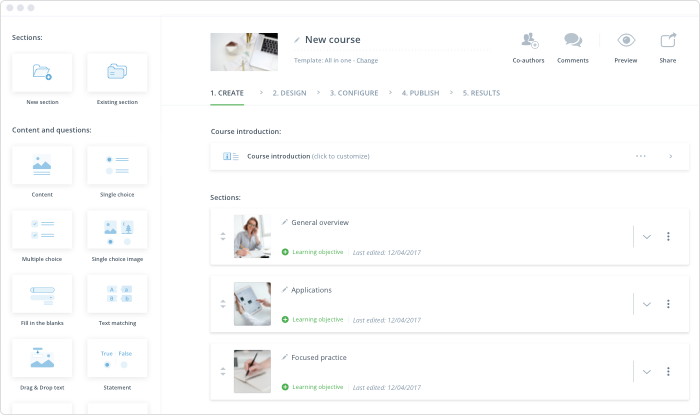
Easygenerator is on this list as an easy option, as the name implies. Easygenerator might be the solution for those who are looking for an online collaboration teaching and learning tool that won’t take much time to master. This collaborative authoring tool allows for an unlimited number of authors and feedback options. Its drag-and-drop creation style is perfect for inexperienced designers or simple projects.
Cost: $108 USD/month (Pro); $541 USD/month (Team); free 14-day trial.
Tools for Virtual Classroom Activities
One of the other huge strengths of collaborative learning software is the ability to create meaningful and engaging classroom activities that all students can participate in. Take advantage of technology and the fact that all students have devices by incorporating their use into the lesson plan. With these student collaboration tools, you’ll have the entire class engaged and learning.
6. Microsoft OneNote – Do assignments, work on files, and create interactive lessons
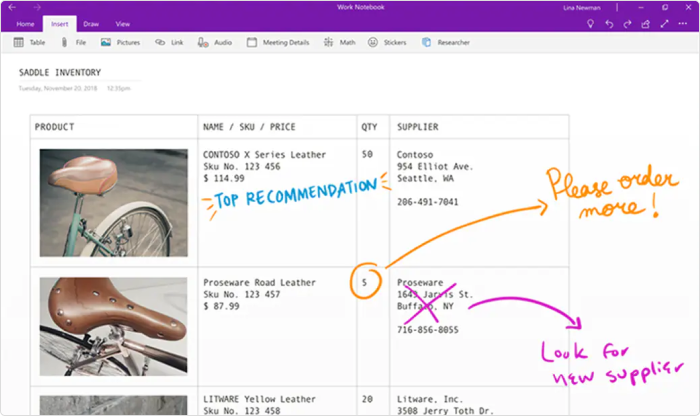
Microsoft OneNote gives teachers a great range of options when planning lessons that maximize the use of interactive elements for better lessons. OneNote works like a smart notebook and collaborative learning software for teachers to share their work with other teachers. It makes it easy to incorporate quizzes, media, and other activities into lesson planning.
Cost: the app is free; the desktop version is included in the paid MS Office suite.
7. Kahoot! – Vibrant quizzes that get everyone involved
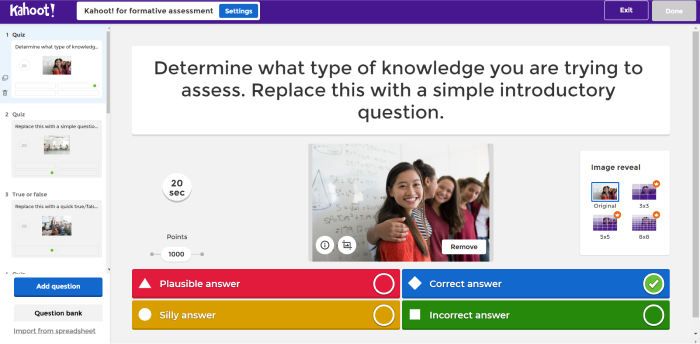
Kahoot is one of the most popular, accessible, and all-round impressive quiz tools for education. Either create your own quizzes or use one made by someone else, and away you go. Students join the quiz via a code on their own devices and can work individually or in pairs. Kahoot is simple to use but visually impressive, making it a go-to online collaborative learning platform.
Cost: free (basic); €3/month (pro); €6/month (premium); €9/month (premium+).
8. Colltrain – Implement playful learning
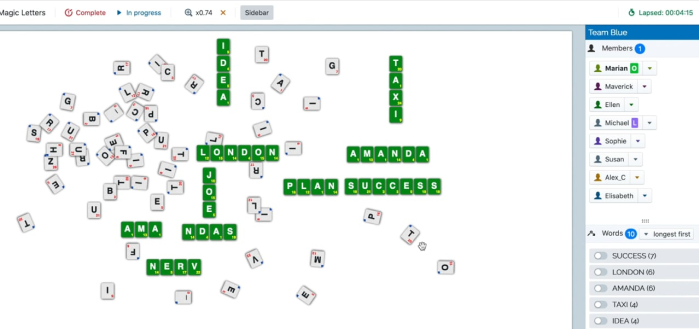
Colltrain, like Kahoot, is a simple classroom game platform. However, it is not limited to quizzes but provides a selection of different educational games to get learners contributing in a meaningful way. This learning tool is not only a great option for schools but also for virtual training across the corporate world, focusing on cooperative activities and games.
Cost: $33/month (Standard); $54/month (Plus); 45-day free trial.
9. Pear Deck – Engage every student with differentiated learning
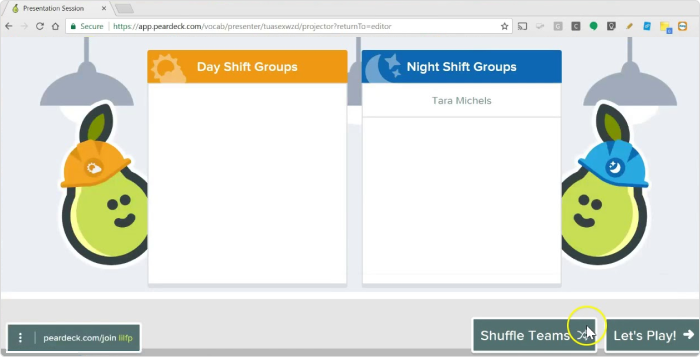
Pear Deck is an interactive presentation tool that focuses on tracking student progress, differentiated assessment, and gamification to deliver a high-quality interactive lesson effortlessly. Pear Deck makes it easy to get students of all abilities to participate in lessons with the flexible templates provided, while instant feedback is collected for later review. As an online collaborative learning platform, PearDeck is a popular choice with teachers of mixed-ability groups.
Cost: free (Basic); $150/year (Individual Premium).
Tools for Sharing Ideas
Perhaps the biggest aspects of working together are sharing ideas, planning as a team, and presenting information to everyone. This is where collaborative learning software can help, by providing a digital platform for colleagues and students to share ideas, information, and feedback in a way that’s visually engaging. Whether it’s used for classroom learning or as a project management tool, these cognitive tools for collaborative learning are exceptional.
10. ConceptBoard – Think together and draw on a whiteboard
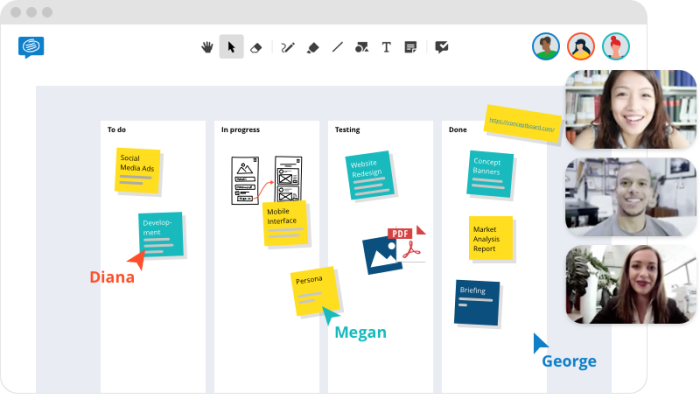
ConceptBoard is an online whiteboard app for displaying ideas in a visual space between users. The digital canvas, screen sharing, and video chat make this one of the most useful collaborative eLearning tools for simple whiteboard activities online. With this app, you can also include sticky notes and add files like images and videos for all to see.
Cost: $7.50 USD per user/month (Premium). Free 30-day trial.
11. Flip – Get video feedback from your students

Flip is a digital collaboration tool that provides a tremendous way to get your students to view, react to, and share ideas in a digital space. Simply upload educational videos and watch as students respond with comments and their own reaction videos. In this way, Flip provides a stream of meaningful reviews and discussions on all your learning topics.
Cost: free
12. InsertLearning – Review texts together and complement them with multimedia

InsertLearning is a free Chrome extension that allows you to nurture discussions on interesting content anywhere on the web. The app works on any site – just open the extension, and you can enhance student learning by annotating, inserting questions, or including videos to engage students. Best of all, this online collaboration tool lets students take the lead in discussions.
Cost: free
13. Figma – Display design skills and share novel ideas

Figma is a team-based interface design tool that has a wide range of use cases. While it can look a little design heavy, it provides a number of super simple templates for educational use, such as timeline planning and moodboarding. Figma is a powerful digital tool for collaborative learning because it allows students to immerse themselves in design and plan tasks, all in real time.
Cost: free (Starter); $12 USD/month (Professional); $45 USD/month (Organization);
$75 USD/ month (Enterprise).
14. Book Creator – Share insights on interactive books
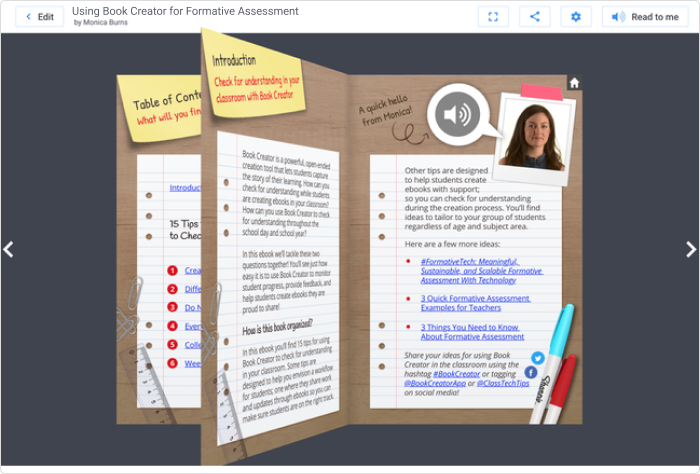
Book Creator is one of the more unique online collaborative learning tools but it remains a great way to engage students and get them sharing ideas. This chrome extension is perfect for book projects and allows you to design manuals, research journals, and digital portfolios with different media and do so using a huge range of templates.
Cost: free (40 books); $13 USD per teacher/month (1,000 books).
15. Soundtrap Edu – Record lessons and podcasts together

Soundtrap Edu is yet another unique tool that allows teachers and students to interact together in a meaningful way. With this communication tool, you can record lessons or sound bites for educational purposes, or even record whole conversations and podcasts for students to listen to later. This is a great way to engage students and share ideas in an audio format, and it’s something everyone can take part in.
Cost: from $8 USD to $14 USD/month; free 1-month trial.
Tools for Content Organization
Some of the best collaboration and learning tools are those that allow your team to organize and compile resources together for enhanced learning. Content curation is a vital part of the collaborative learning process and helps facilitate an environment in which teachers and students can work together to build course content and lesson materials.
16. Padlet – Gather web content

Padlet is a digital bulletin board that allows students to work on their collaboration skills by contributing to the class with documents, links, videos, and images that can be further used in class activities or lesson plans. This is one of the most vibrant and easy-to-use collaborative learning tools for students, which makes it great for classes of all abilities and subjects.
Cost: free version; $99 per user/year (Business); $2,000/year (School).
17. Diigo – Gather web content, annotate it, and share it
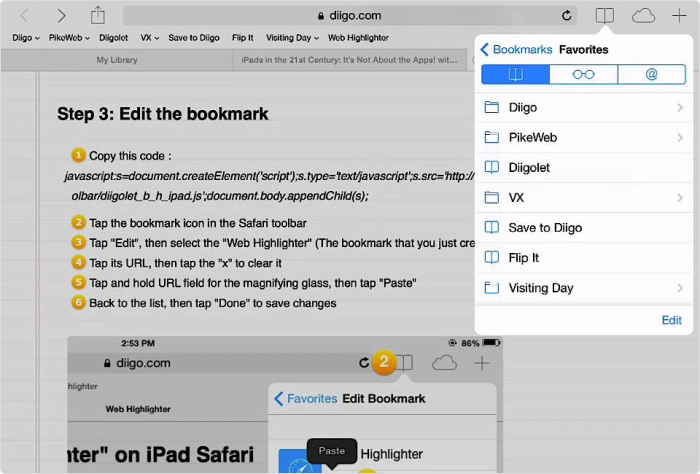
Diigo is another collaboration tool for eLearning that allows group members to collate online resources but also lets users annotate and highlight for even better communication. This engaging learning tool is available as a browser extension or as a mobile app, meaning it’s accessible in different situations and great to use with colleagues or school students.
Cost: free by default and for educators; other versions start at $40/year.
18. Zotero – Gather sources for research and share them

Zotero is one of the most useful collaboration learning tools in higher education. While this is another collation tool, Zotero focuses on helping you collect and share research sources and papers from all over the web. The platform is entirely free and is a perfect solution for creating a bibliography for a project with multiple contributors.
Cost: free
19. Symbaloo – Get your tiles in a row

From collaborative online learning tools for universities to collaborative learning software that would be more suitable for younger learners, Symbaloo is a colorful tile-based curation tool. This simple app allows you and your learners to organize a homepage of custom tiles that display files, games, activities, and websites. You can even collaborate with other teachers from around the world.
Cost: free version; pro versions start at $49/year.
Tools That Boost Productivity
In a modern workplace or school, workers and teachers are expected to complete a wide range of tasks, work closely with others, and be extremely organized. For these reasons, online collaborative productivity tools have become more and more sophisticated and widely used. In order to stay organized and cooperate effectively, it’s more important than ever to pick up and master one of these productivity platforms.
Also read → Best Interactive Presentation Software
20. Google Workspace – A myriad of tools for all your productivity needs
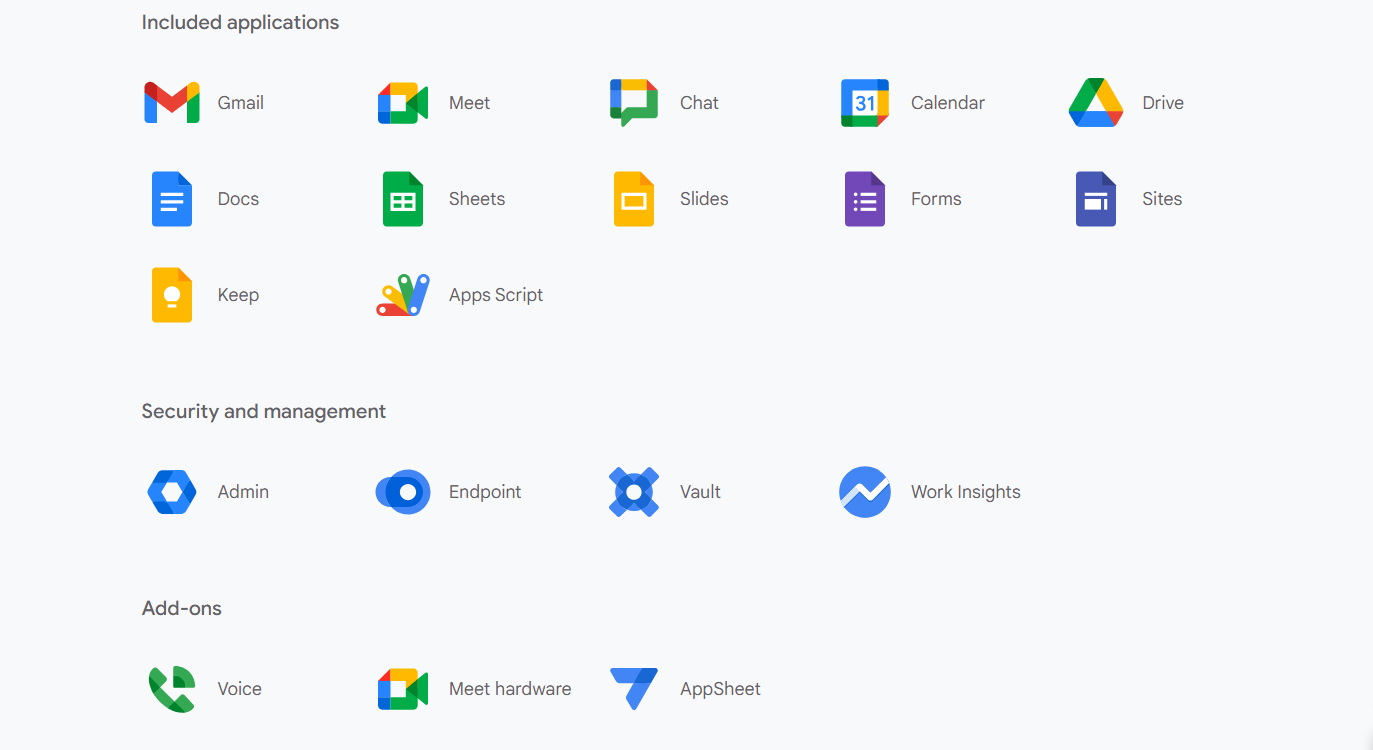
Google Workspace is a collection of online tools made by Google to boost productivity and facilitate working together. It includes tools such as a calendar, a drive for sharing files, and equivalents of the Microsoft Office applications. These tools are all cloud-based and can be shared and edited in real time by anyone with access. This fact makes these tools great for collaboration between teachers, as well as for students.
Cost: free
21. Notion – A clean and sophisticated platform packed with features
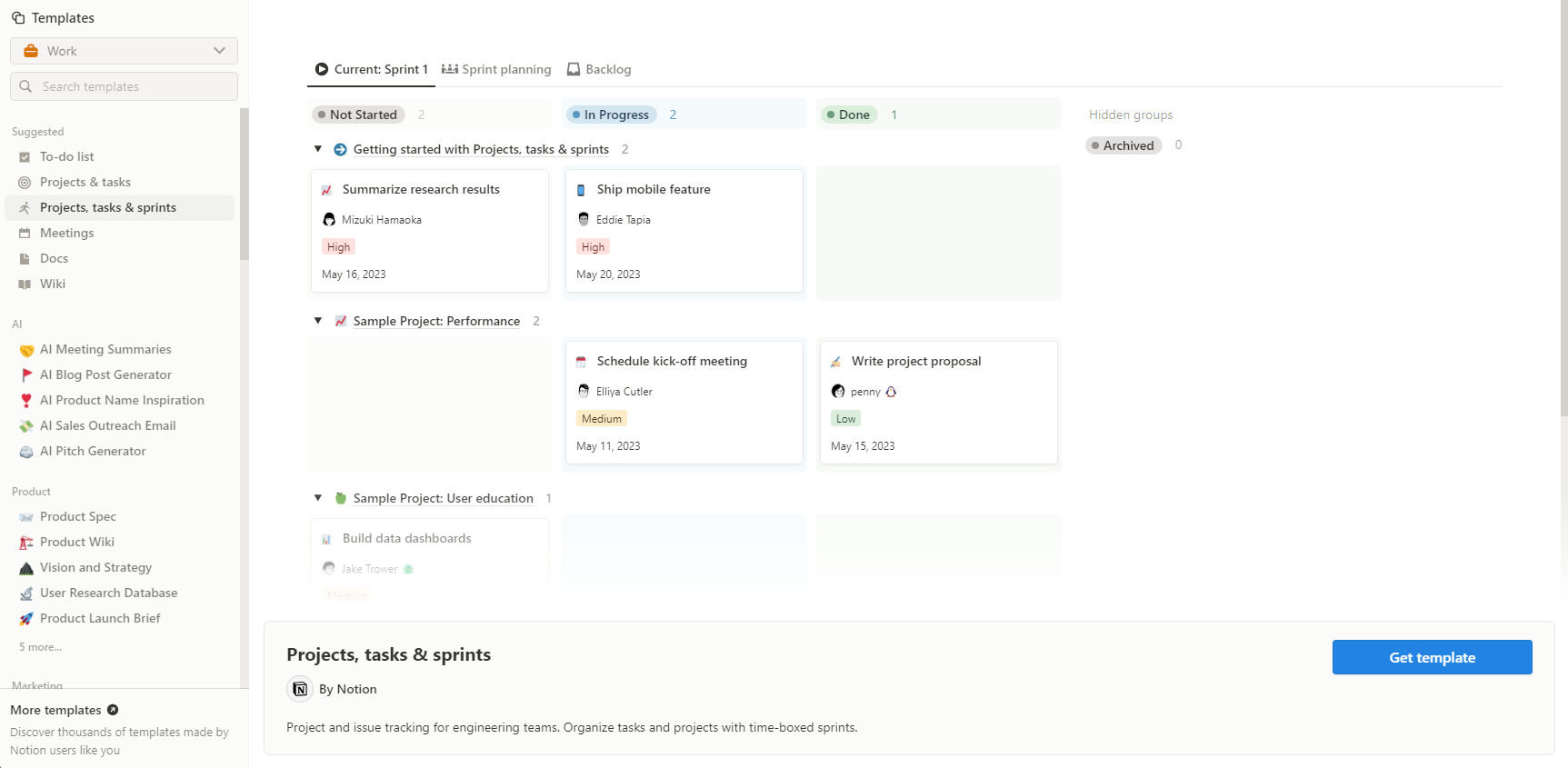
Notion is a sleek and ergonomic productivity tool that can be used by teachers and workers to collaborate, plan, design, and work in peace. While it can take a little time to get to grips with all the features, Notion can serve as a powerful productivity tool that can save time and keep people organized in a myriad of ways. Now, with Notion’s experimental AI features, users can potentially save even more time and work in tandem more effectively.
Cost: free (basic); $8/month (Plus); $15/month (Business).
LMSs for Collaboration
An LMS, or learning management system, is an all-in-one solution for delivering digital educational content. It serves as a platform for educators to deliver and display educational content and for learners to access and engage with lessons. Collaboration tools and learning management systems therefore go hand in hand. The very best LMSs offer a range of features for cocreating instructional designs, boosting learner engagement, and tracking student progress.
22. iSpring Learn – A reliable LMS to onboard, upskill, and certify your teams

iSpring Learn effortlessly balances ease of use with high-quality educational experiences. Upload your digital courses, enroll your students, and let the LMS do the rest. Students can engage with a range of media and interactions, while educators and SMEs can all track and monitor learning progress and outcomes. As collaborative learning solutions go, iSpring Learn is a breeze to use.
Cost: starts at $6.64 per user/month for 100 active learners; free 30-day trial.
23. 360Learning – Manage collaborative learning with confidence
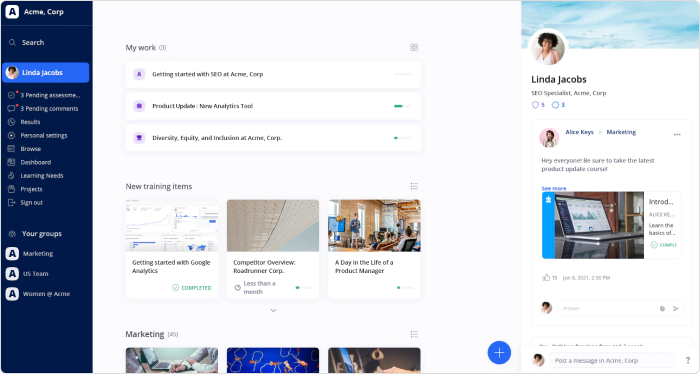
360Learning is a cloud-based collaboration tool for online learning. The platform allows team members to create and edit courses, assign roles to members, and invite external users for review purposes. A training roadmap guides learners towards meeting their learning needs, and learners can comment on the course.
Cost: $8 per user/month.
24. Docebo – Streamline your learning management with user-generated resources
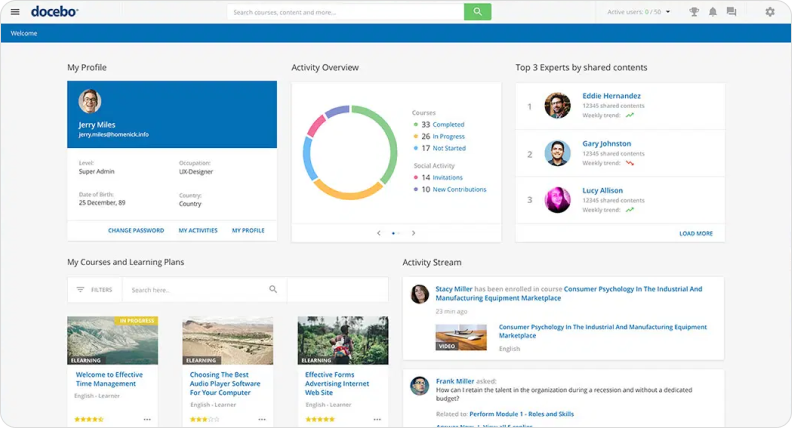
Docebo is an LMS that boasts a sleek and clean design with simple drag-and-drop functionality for a streamlined learning experience. The platform allows you to leverage user-generated materials to incorporate them into your designs and deliver them to your learners. Docebo is moving forward with its AI integration, which can be harnessed to achieve better learning outcomes for enterprises.
Cost: upon request
25. Schoology – Help your learners work together with custom learning groups
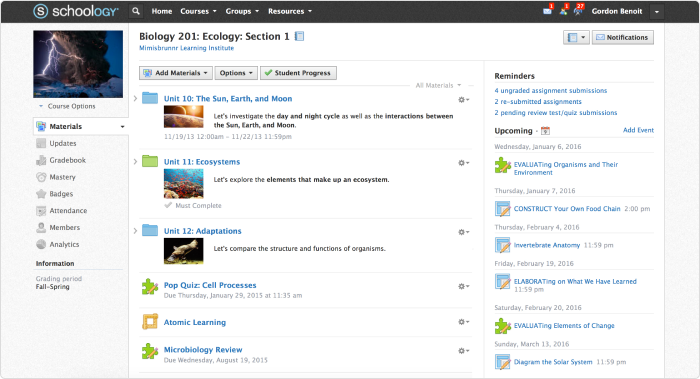
Schoology, like other LMSs, is an online collaborative learning platform, but with a focus on being used in schools and colleges by both teachers and students. Schoology provides great interactivity opportunities with teacher groups, student groups, and public groups to keep everyone sharing and working together.
Cost: free for educators
Conclusion
Collaboration tools for online learning come in many different configurations. While some are handy little tools for specific use cases, others are entire suites designed to solve every problem. Either way, any tool that can be leveraged to increase the level of collaboration in a learning environment is worthwhile.
Whether you want to work together on lesson design, classroom activities, brainstorming, content organization, team productivity, or learning management, you can find a tool that suits your needs. As is often the case, different educators will have different needs and skills, which means they’ll find utility in a unique selection of these collaborative learning tools.



